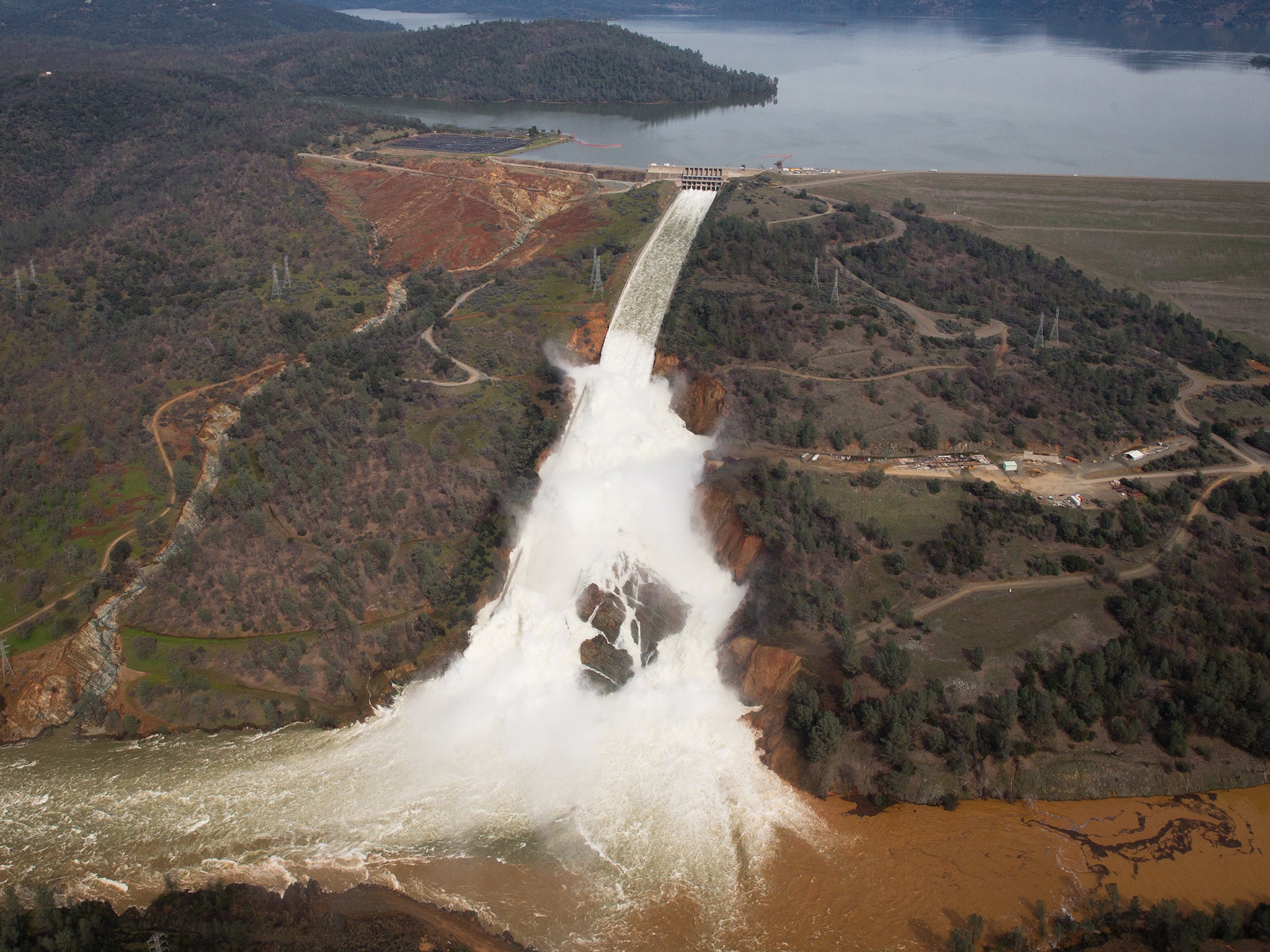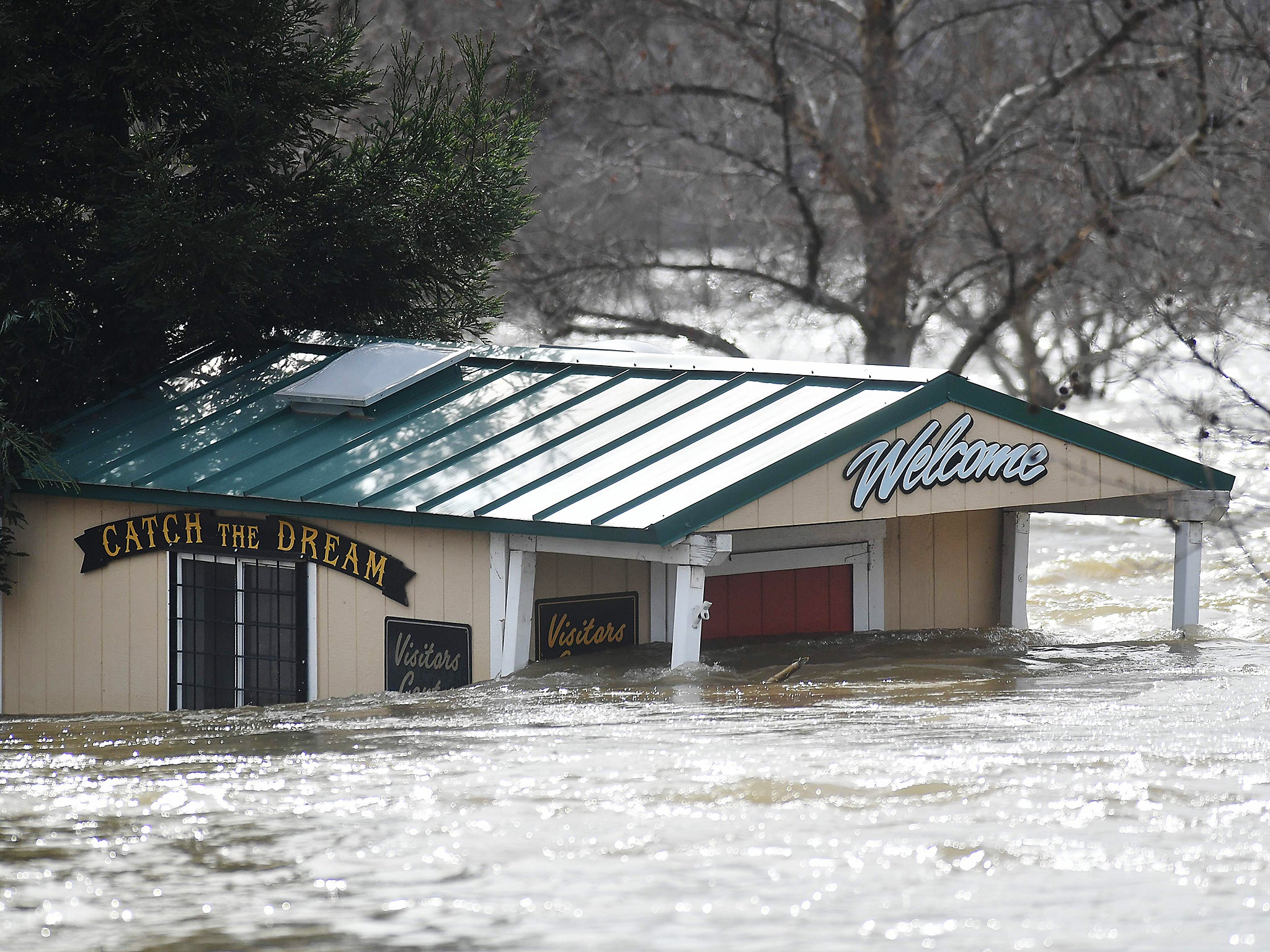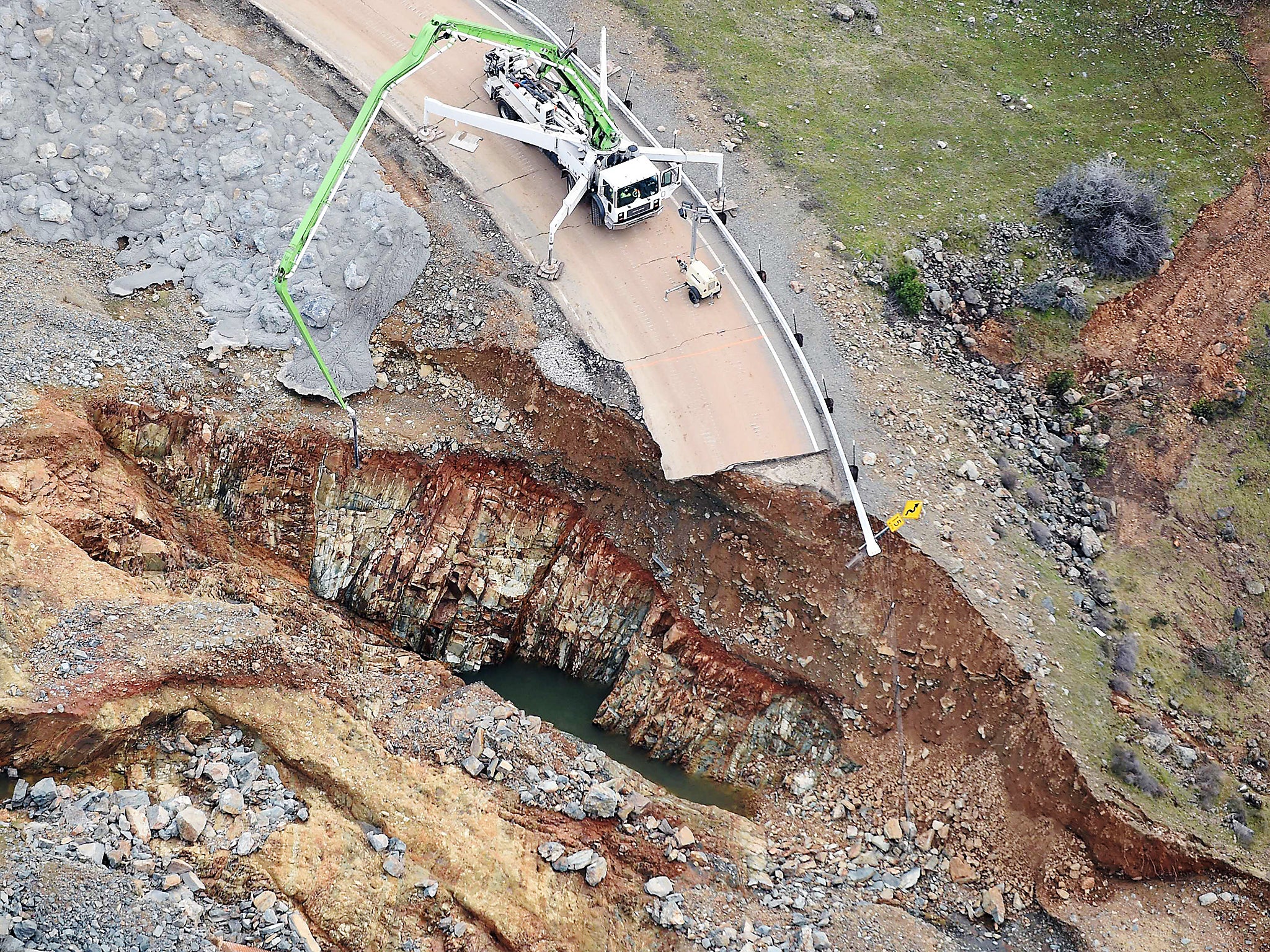Oroville dam: Evacuation ends as officials drain enough water to avert catastrophe
Nearly 200,000 people were evacuated after drainage channels were damaged due to an unusually wet winter

Your support helps us to tell the story
From reproductive rights to climate change to Big Tech, The Independent is on the ground when the story is developing. Whether it's investigating the financials of Elon Musk's pro-Trump PAC or producing our latest documentary, 'The A Word', which shines a light on the American women fighting for reproductive rights, we know how important it is to parse out the facts from the messaging.
At such a critical moment in US history, we need reporters on the ground. Your donation allows us to keep sending journalists to speak to both sides of the story.
The Independent is trusted by Americans across the entire political spectrum. And unlike many other quality news outlets, we choose not to lock Americans out of our reporting and analysis with paywalls. We believe quality journalism should be available to everyone, paid for by those who can afford it.
Your support makes all the difference.Californians who were ordered to evacuate due to a threat from the tallest dam in the United States can now safely return to their homes and businesses may reopen, a county sheriff said on Tuesday.
A previous evacuation order has been reduced to an evacuation warning, Butte County Sheriff Kory Honea told a news conference, after water management officials drained enough water from the Oroville Dam to relieve pressure and avert a catastrophe.
The warning means that people can return home but should be prepared to evacuate again if necessary, Honea said.
Officials had ordered 188,000 people living down river from the dam to evacuate.
Both the primary and backup drainage channels of the dam, known as spillways, were damaged after a buildup of water that resulted from an extraordinarily wet winter in Northern California that followed years of severe drought.
The greatest danger came from the emergency spillway, which allows water out of the reservoir when capacity is reached. Though damaged, the primary spillway was still useable, officials said.
More rain was forecast for as early as Wednesday and through Sunday, according to the National Weather Service, but the state Department of Water Resources said the upcoming storms were unlikely to threaten the emergency spillway.
Swift action by the department to shore up both spillways while also relieving pressure on the dam averted the immediate danger of a dam failure, Honea said.

A failure could have unleashed a wall of water three stories tall on towns below.
State officials used 40 trucks carrying 30 tons of rock per hour to reinforce the eroded area while two helicopters dropped rock and other materials into the breach.
"We're aggressively attacking the erosion concerns that have been identified," said William Croyle, acting director of the Department of Water Resources.
Among those who had fled the danger zone were hundreds of families camped out in cars and tents at Silver Dollar Fairgrounds in Chico, about 25 miles (40 km) northwest of Oroville.
"I left everything in my house. I've got a four-bedroom, two-bathroom house and I don't know what's going to happen to it," said William Rigsbay, 53, of Thermalito.
Storefronts and strip malls were shuttered and traffic was light along California's state highway 99 near Oroville, about 65 miles (105 km) north of Sacramento. The packed parking lot of a 7-Eleven convenience store in nearby Live Oak was one of the few signs of life along the route, other than emergency personnel.
Water authorities had been relieving pressure on the dam through the concrete-lined primary spillway last week, but lake levels rose as storm water surged in and engineers moderated its use. Then the rising water topped over the earthen backup spillway, which has a concrete top, for the first time in the dam's 50-year history over the weekend.

When the emergency spillway showed signs of erosion, engineers feared a 30-foot-high section could fail, leading to the evacuation order on Sunday. Both spillways are next to the dam, which itself is sound, engineers say.
California Governor Jerry Brown on Monday sent a letter to U.S. President Donald Trump asking him to issue an emergency declaration, which would open up federal assistance for the affected communities.
White House spokesman Sean Spicer on Tuesday told reporters the administration would "make sure we are doing everything we can to attend to this matter" and "help people who have been impacted," adding that the dam was evidence that the United States needed to overhaul its infrastructure, one of Trump's domestic goals.
Reuters
Join our commenting forum
Join thought-provoking conversations, follow other Independent readers and see their replies
Comments